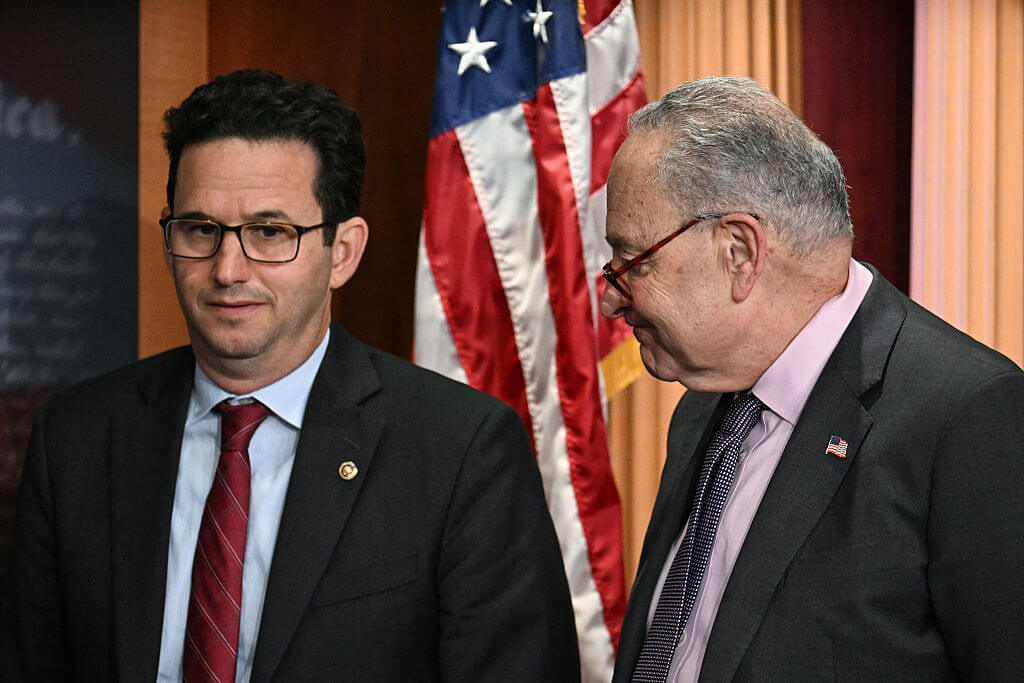Why Do Jewish Leaders Keep Ignoring Ultra-Orthodox Education Crisis?

Image by getty images
The New York State Legislature is currently considering two bills, one introduced by Assemblywoman Ellen Jaffee in early May, the other by Sen. David Carlucci and Assemblyman Kenneth Zebrowski in January, to strengthen existing legislation requiring nonpublic schools to meet the state’s minimum education standards. But Jewish leaders and groups who are usually very vocal on issues that directly affect the community’s wellbeing are staying silent, possibly because they fear a backlash from the Haredi groups that oppose the legislation. This inaction threatens the bills’ future, and could, in time, have severe consequences for the community as a whole.
Although the American Jewish community is well known for its educational achievements, philanthropy and investments in communal organizations and services, it has mysteriously allowed a significant portion of its own community to grow up undereducated, without the skills to earn a basic living. Why?
Jewish elites and organizations in the United States have long worried about demographics. Intermarriage, assimilation and low birthrates may do what centuries of anti-Semitism and persecution have not: threaten the community’s survival. As such, leaders repeatedly express concern over how to reverse the tide — how to reach out to those unaffiliated with Jewish institutions and how to inspire strong Jewish identity in a country so full of equality, acceptance and material comfort. And yet, in the meantime, another challenge has gone unnoticed or ignored: the education of what will become the majority of the community in a couple of generations.
The growing assimilation and shrinking numbers of secular American Jewry have been accompanied by the immense growth of the Orthodox population, especially the Hasidim, who have higher birth rates, lower intermarriage rates and little assimilation. Data from the Pew Research Center show that as of 2013, 10% of American Jews identify as Orthodox, including 6% who belong to ultra-Orthodox groups. This population is on a rapidly rising trajectory. The Pew data also show that over a quarter of American Jews under the age of 18 live in Orthodox households. According to a 2011 UJA-Federation of New York study, almost two-fifths of all Jewish children in New York City are Hasidic.
Many youth in this community, especially the Hasidim, are ill prepared for employment and likely to struggle with poverty. The problem is most acute among boys, because they receive less secular education than girls. On average, Hasidic boys receive only 90 minutes of instruction in English and math four days a week, until the age of 13. After 13 they receive no secular education at all, because they focus on Judaic studies for as many as 14 hours a day. As a result, these students can be well educated in religious studies but unprepared to find jobs in the workforce. They often do not even speak proper English because of their lack of exposure to it (Yiddish predominates within the community). While students finish the equivalent of high school, few have gained enough secular knowledge to pass state exams, which they don’t usually take.
Hasidic leaders have long resisted any change to this regime, because they fear greater exposure to the world. Yet, Jewish teaching is clear on the need for every adult to work. As the medieval sage Maimonides warns: “All Torah that is not accompanied by work will eventually be negated and lead to sin. Ultimately, such a person will steal from others.” The marked growth of a Haredi community in which students lack basic work skills will mean that within about two generations, a significant portion of the Jewish population — maybe even a third or more — will be unable to earn a decent living, unable to contribute financially or practically to Jewish institutions, and unable to partake in American life as ordinary citizens. The poverty rate will be higher than anytime since the middle of the 20th century; studies commissioned by the Metropolitan Council on Jewish Poverty and the UJA-Federation of New York already show a rising proportion dating back to at least the 1970s. A significant and growing factor in this upward movement is the fact that a remarkable three-fifths of Hasidic households in the New York City area are poor or near poor.
Major Jewish leaders and organizations should prioritize opportunities for Haredim — especially the Hasidic — to learn English and gain work skills. This means investing in the community’s primary and secondary schools and lobbying for change. Practical steps could include subsidizing secular teachers, upgrading facilities and setting aside more time for math, science and language. Leaders should press politicians to enforce state laws on the minimum standards required of primary and secondary schools. New programs could help students apply to college after studying in yeshivas, or provide trade skills in a dedicated facility that allows them to maintain their current lifestyles.
The Haredi lifestyle and religious observance must be respected. These Jews are carrying on a long tradition, living lives with much to admire, and staying firm in their beliefs. The growth of the community is a real blessing; it will help ensure that the American Jewish Diaspora continues to be relevant in the face of demographic changes elsewhere. But their continued vitality requires the skills to earn their keep, so that these children do not grow up to depend on the state or on the rest of the community for handouts.
Seth Kaplan, a professorial lecturer at the Paul H. Nitze School of Advanced International Studies at Johns Hopkins University, sits on the board of Yaffed, an organization dedicated to improving the education opportunities for Haredim. Naftuli Moster is the executive director of Yaffed.
















